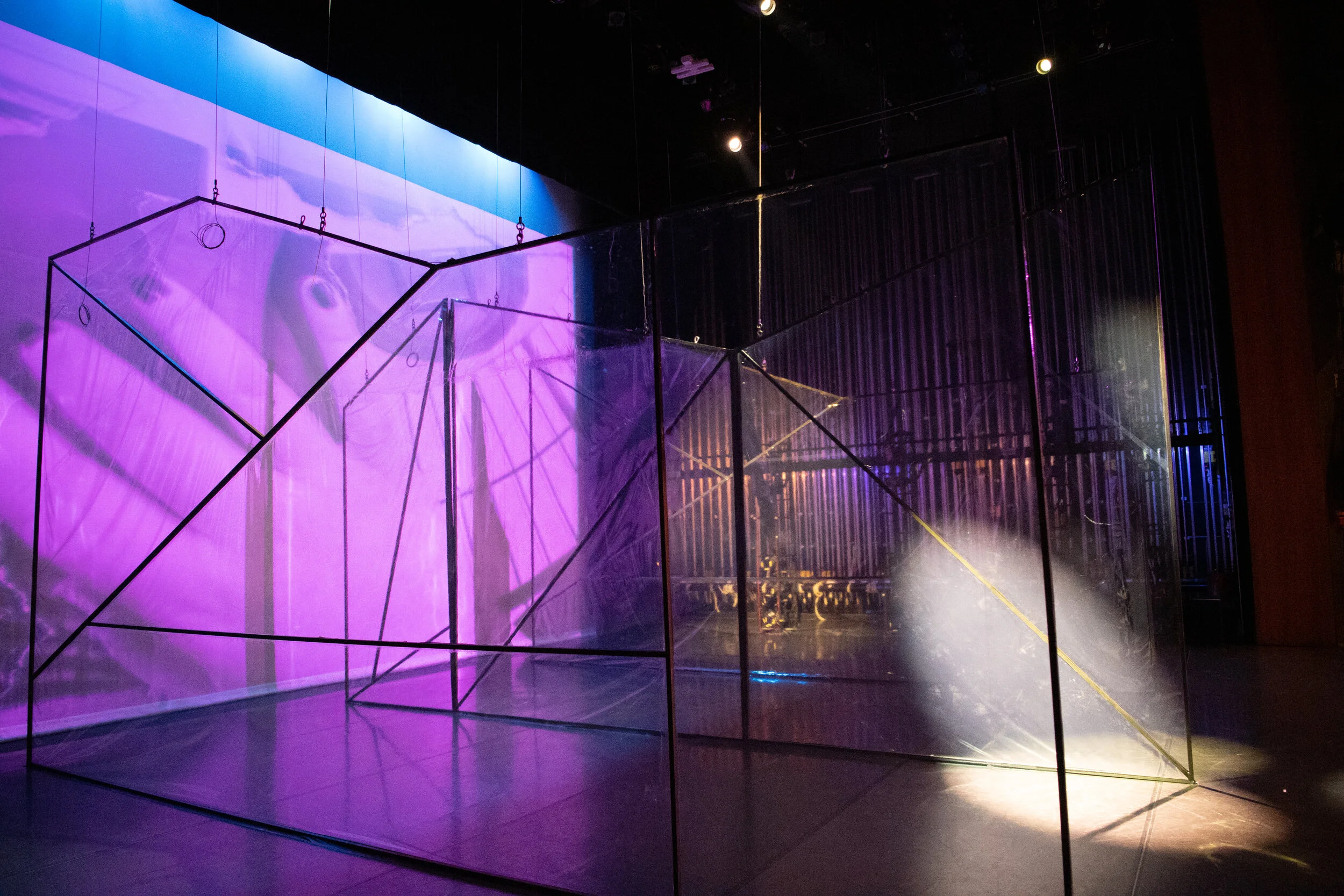Scenography Section
2020 has been a wild time for all of us, especially in the Theatrical industry. University at Buffalo’s Home and Away was an attempt to figure out how to adapt theatre to the current crisis- maintaining safety while still exploring the arts. In some cases, however, we did not need so much exploration as a recognition of what we already understood- in this case, Scenography.
That said, the Scenography section still explores new ground for us- what it means to be isolated in these trying times. In this, we follow a group of friends as they summit challenges, face hardship and separation, and eventually go their separate ways.
The scenography section was a combined lights, sound, and projections piece designed to tell a narrative without any narration or performers.
The Team
Lighting Designers: Timothy Swenson, Rebecca Stock
Projection Designer: Madison Sullivan
Lighting Programmer: Francisca Losada Hernandez
Music: 'The Name of Friendship Lasts' by Rebecca Stock
Photo Credits: Ken Smith, UBPGA Story Begins
An Adventure Together
The Project follows a group of compatriots- the moving lights- as they meet, adventure together, fight amongst themselves, and eventually part ways. In the Beginning, the group are separate individuals without purpose. As time wears on, they come together to go on a grand adventure, and face terrible trials. At the climax of their achievements, they find themselves in disagreement. As lines are drawn in the sand, the party splits into two, and does battle with themselves. Eventually, they are brought together once more, resolving their differences. The party, task complete, splits once more to resume their individual wanderings- calmer now, and better for having met each other.
On the technical side of things, we utilized OSC with the projections and sound setups to make sure everything started on time. Past the initial start command, we utilized our lighting console’s in-built timecode to handle the light cues, as our projections and sound only needed a start command, and then would run on with no other input. This methodology was admittedly rough around the edges, and if I had to do it over again I would stick with strictly OSC, but it did work. The complexity of the piece and cues, as well as the short duration of the piece in its entirety necessitated such measures. The timecode also let us edit cues and timing without touching the parts that worked, which was a great deal of help as it let us design in piecemeal- once we knew where Becca’s section would fall, we could design without fear of messing up the other’s section, which was wonderful, considering how many iterations we each went through before we finalized the design.






















